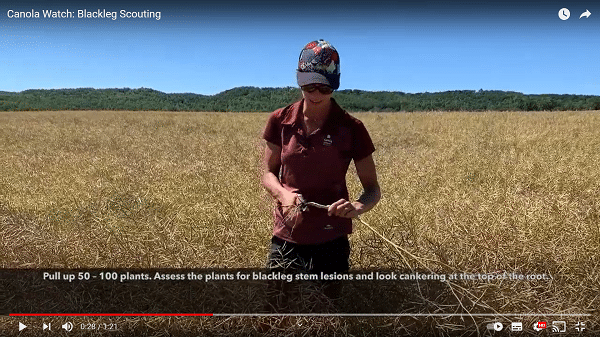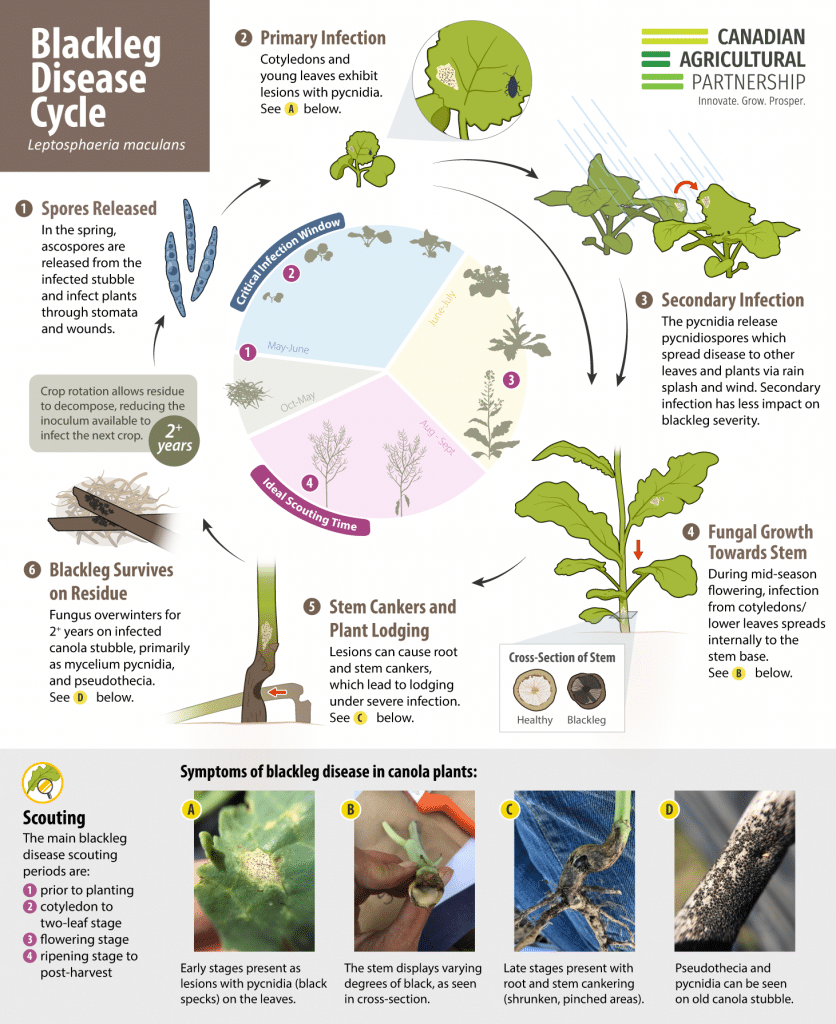
A few steps to take before hitting the field
There are a few steps every canola producer must take before combining canola. The first is determining if fields will be swathed or straight-cut. For more information on harvest management in dry years, read this. General swathing preparedness tips are available in the Canola Swathing Guide. Many producers this year will be swathing in high temperatures. This is an inherently risky practice because very dry pods can shatter if swathed on a hot day. If possible, consider swathing at night when temperatures are usually cooler. More information is available here. Once harvest has started, make sure you have an efficient way to measure grain losses. Use the Harvest Loss Calculator tool and the Combine Optimization Tool to determine if and which adjustments need to be made to increase combine efficiency and reduce grain losses..

Time is running out for spraying
Following pre-harvest intervals (PHIs) for pesticide spraying plays a crucial role in ensuring access to world markets for Canadian canola. However, time is quickly running out for using several pesticides (see the above chart for a look at the PHIs for several insecticides approved for canola). If in doubt, use the Spray to Swath Interval Calculator to help you determine whether or not to spray.
Canola and lygus bugs – a fight to the finish
Lygus bugs and canola race each other to their respective maturity. Around this time of year canola pods become too hard and leathery for the mature bugs’ mouthpieces to pierce. If you are seeing lygus numbers above threshold (about 2-3 per sweep) in your net, consider the maturity of the lygus and of the canola crop as well as pre-harvest intervals before spraying. Other insects of note this week include a new generation of flea beetles, which can be found feeding on canola and weeds near field margins. Fall flea beetle feeding and subsequent economic damage to canola is uncommon at this time of year but can occur. Read more on lygus bugs in the Canola Encyclopedia and the Canola Research Hub.
Don’t fret about crickets, but don’t ignore them either
Crickets have recently been spotted in some canola fields in Manitoba and Saskatchewan. Although not generally considered a canola pest, they are generalists that will eat just about anything — including canola — if they’re hungry enough. Although experts say it’s unlikely cricket feeding reduces yield this late in the season, it’s better to be safe than sorry: keep a watch out for them. If you think they’re causing damage, consult your local CCC Agronomy Specialist for advice. Learn more about more common late-season canola insect pests here.
In case of blackleg, keep a pair of clippers handy
Harvest is a great time to scout canola for blackleg. Make sure you pack clippers in your swathers and in your back pocket any time you hit the field. Use the clippers to cut uprooted plants at slightly below ground level into the root tissue and examine the inside for discolouration. If you see a lot of blackleg, send samples in for testing to see which races of blackleg are prevalent and consider changing resistance sources in future years. The CCC’s Blackleg Yield Loss Calculator is available to calculate your potential blackleg yield loss based on severity, incidence and projected yield of your canola.
Drought stress triggers precocious germination
Seeds sprouting in the pods is called precocious germination. Drought stress can cause a hormone response that triggers seed sprouting in the pods. For more information, take this week’s Canola Quiz on pods and review the answers.

